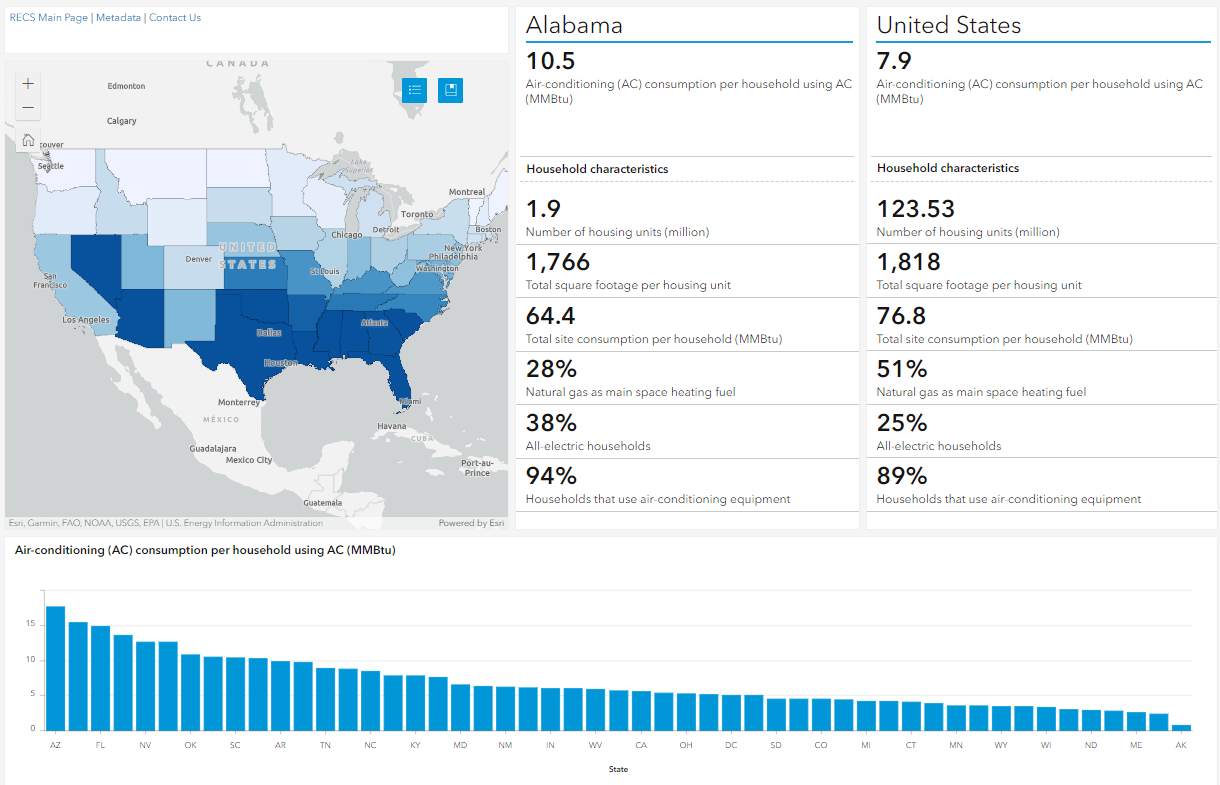The impact of increasing home size on energy demand
RECS 2009 — Release date: April 19, 2012
Homes built since 1990 are on average 27% larger than homes built in earlier decades, a significant trend because most energy end-uses are correlated with the size of the home. As square footage increases, the burden on heating and cooling equipment rises, lighting requirements increase, and the likelihood that the household uses more than one refrigerator increases. Square footage typically stays fixed over the life of a home and it is a characteristic that is expensive, even impractical to alter to reduce energy consumption.
According to results from EIA's 2009 Residential Energy Consumption Survey (RECS), the stock of homes built in the 1970s and 1980s averages less than 1,800 square feet (Fig. 1). That average increases to 2,200 square feet for homes built in the 1990s and to 2,465 square feet for homes built in the 2000s. While the average floor area has been increasing, so has the ceiling height of many new homes. RECS data show that just 17% of homes built in the 1970s have higher than the traditional eight-foot ceilings, while that number increases to 52% in homes built in the 2000s.
Coldest areas of the U.S. have the largest homes, while the smallest homes are in milder climates
In the Midwest, where space heating accounts for half of home energy consumption, residents heat more space on average than any other part of the country. In Wisconsin, for example, the average heated square footage is nearly 2,100 square feet. By contrast, homes tend to be smaller in parts of the country where space heating is less intense. In California, where most of the population resides in mild or hot climate regions, the average heated square footage is 1,180. Factors including housing market prices, income, and urbanicity explain differences in home size, but the fact remains that homes on average are larger in areas with the most extreme winter weather.
Air-conditioned space rises significantly over past 20 years
Central air-conditioning was installed in 85% of homes built in the last two decades, resulting in a dramatic increase in the amount of residential space that is cooled and contributing to a nearly two-fold increase in electricity consumed for air-conditioning. Of the 139.8 billion cooled square feet in the U.S. housing stock, over 58 billion (40%) is attributable to homes built in the last two decades. Population migration to the warmer climates of southern and western states accounts for much of the rise. Thirty-one billion cooled square feet have been added in the South in the last two decades alone, which is more than the cooled square footage of homes built in that region in the previous five decades combined. Figure 2 highlights not only the housing boom in the South, but also the new construction trends toward larger homes with much more space to cool.
Larger homes have more energy efficient features
While overall home size and air conditioned space have been increasing, the likelihood that a home will have key energy efficient features rises as its square footage increases. Residents in larger homes consider their homes to be better insulated than those in smaller homes and these homes tend to have more efficient windows (Table 1). These trends, as well as changes in equipment, appliance, and construction standards in the last 15 years, are tempering energy consumption in larger homes.
Average Square Footage |
|||
|---|---|---|---|
| Respondents who say their home… | Total | Heated | Cooled |
| Is "Well Insulated" | 2,234 | 1,897 | 1,465 |
| Is "Adequately Insulated" | 1,926 | 1,620 | 1,235 |
| Is "Poorly Insulated" | 1,631 | 1,286 | 837 |
| Has "No insulation" | 1,249 | 743 | 417 |
|
|
|
|
| Has Triple Pane Windows | 2,807 | 2,439 | 1,924 |
| Has Double-Pane Windows | 2,234 | 1,901 | 1,440 |
| Has Single-Pane Windows | 1,584 | 1,267 | 919 |

 View the dashboard ›
View the dashboard ›